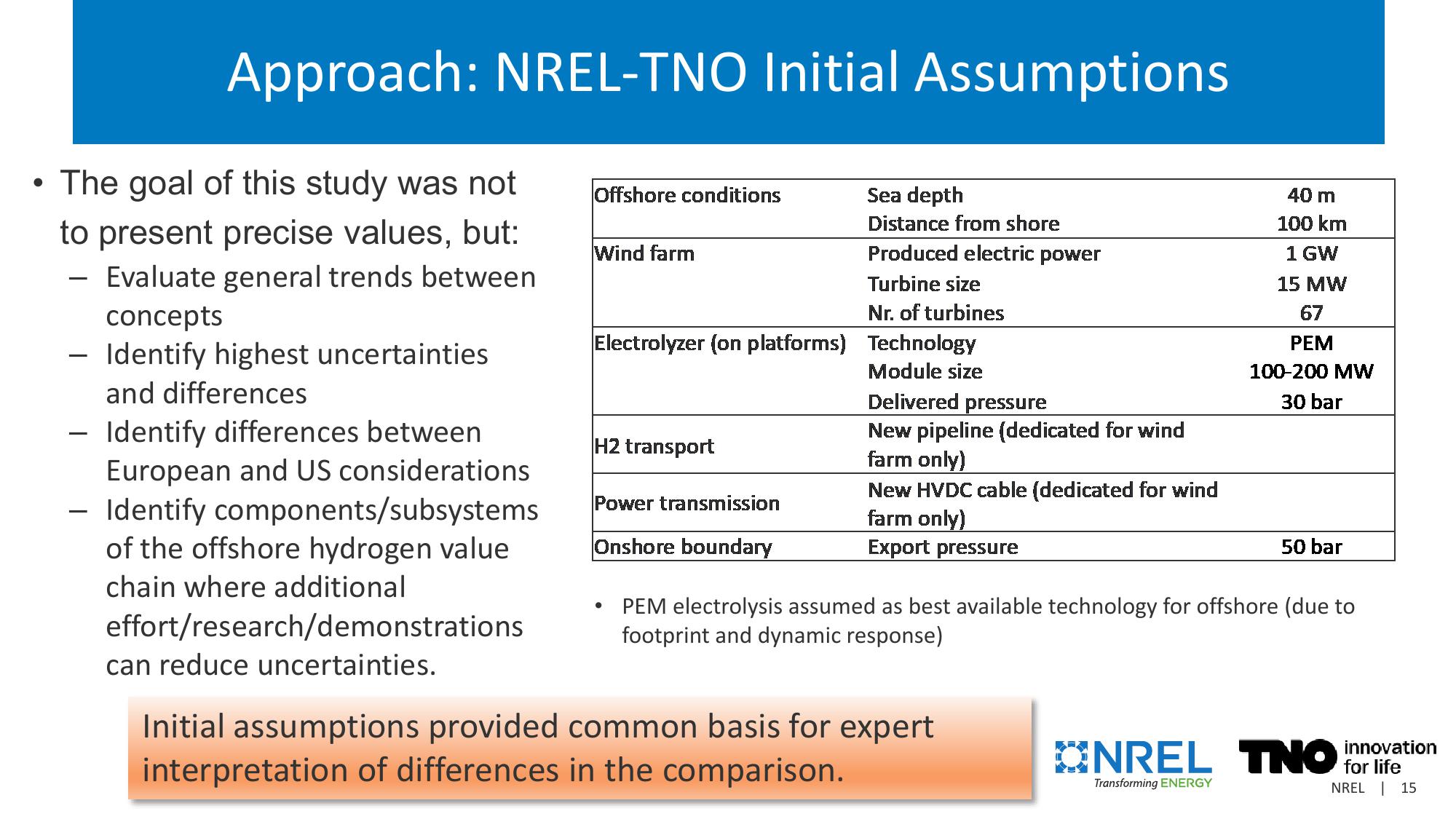U.S. Wind to Hydrogen Modeling, Analysis, Testing, and Collaboration
Approach: NREL-TNO Initial Assumptions
•
The goal of this study was not
Offshore conditions
Sea depth
to present precise values, but:
-
-
Evaluate general trends between
concepts
Identify highest uncertainties
and differences
- Identify differences between
European and US considerations
Identify components/subsystems
of the offshore hydrogen value
chain where additional
effort/research/demonstrations
can reduce uncertainties.
Wind farm
Distance from shore
Produced electric power
Turbine size
40 m
100 km
1 GW
15 MW
Electrolyzer (on platforms) Technology
H2 transport
Power transmission
Onshore boundary
.
67
PEM
100-200 MW
Nr. of turbines
Module size
Delivered pressure
30 bar
New pipeline (dedicated for wind
farm only)
New HVDC cable (dedicated for wind
farm only)
Export pressure
50 bar
PEM electrolysis assumed as best available technology for offshore (due to
footprint and dynamic response)
Initial assumptions provided common basis for expert
interpretation of differences in the comparison.
innovation
ONREL TNO for
Transforming ENERGY
NREL 15View entire presentation